Lewis I. Cohen
Lewis I. Cohen made his first deck of cards in 1832. In 1835 Mr Cohen invented a new machine to print four colours on a sheet at once, which was to revolutionise the entire playing card industry.
Lewis I. Cohen (1832-1860)
Lewis I. Cohen made his first deck of cards in 1832. In 1835 Mr Cohen invented a new machine to print four colours on a sheet at once, which was to revolutionise the entire playing card industry. This innovation soon led to his dominance in the market. In 1838 he moved to 118 William Street and in 1844 purchased a large building at 184-190 William St., to house his newly expanded plant. At the same time he relocated his store to 134 William St. Meanwhile Lewis Cohen gave control of his firm to his son Solomon L. Cohen and his nephew John M. Lawrence. On Lewis Cohen's death in 1860 the company changed to Lawrence, Cohen & Co. and in 1864 to Lawrence & Cohen.
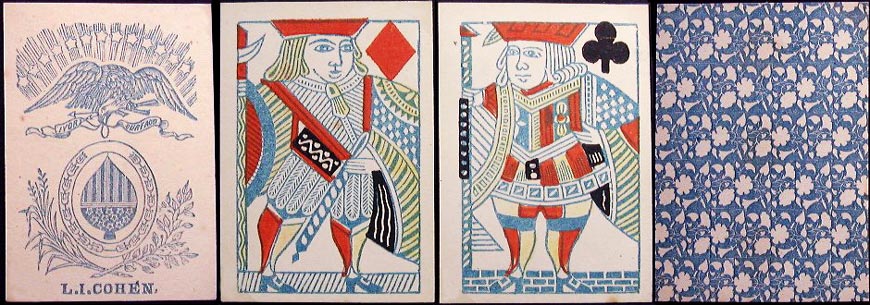
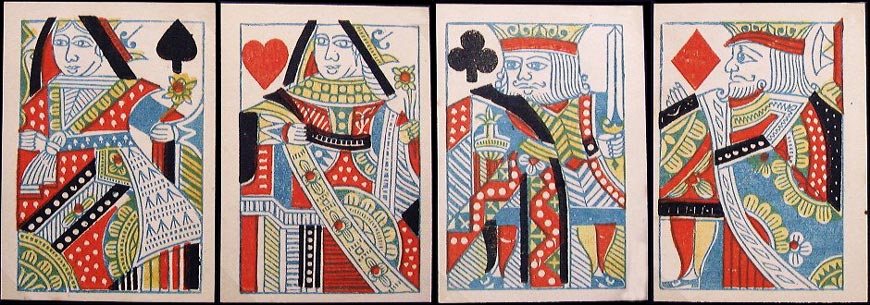
Above: 'Highlanders' deck produced by L.I. Cohen, c.1840-60. The full-length courts have been made to resemble the wood-block courts of earlier times. A facsimile edition of the deck was published by U.S.Games Systems titled 'Highlanders'. See fragments of cards discovered behind an old door hinge.
Lawrence, Cohen & Co. (1860-1864)
On Lewis Cohen's death in 1860 the company was managed by his son Solomon L. Cohen and his nephew John M. Lawrence, and the name changed to Lawrence, Cohen & Co. In 1864 the company name changed yet again to Lawrence & Cohen. The cards shown below are from this brief period.
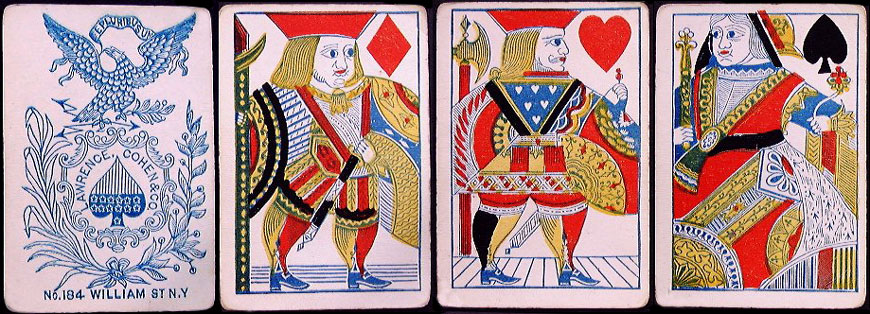
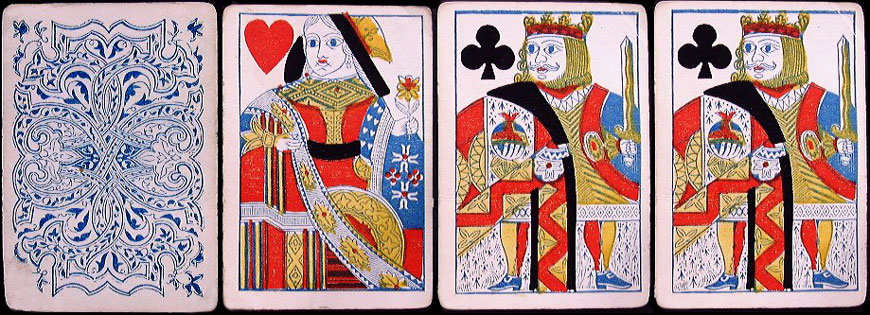
Above: one of the earliest decks with the Lawrence, Cohen & Co. name, which can be read on the Ace of Spades along with the 184 William Street address, c.1860. This subsequently became the address for the New York Consolidated Card Company when this was formed in the early 1870s.
Lawrence, Cohen & Co. became Lawrence & Cohen in 1864.
By Simon Wintle
Spain • Member since February 01, 1996 • Contact
I am the founder of The World of Playing Cards (est. 1996), a website dedicated to the history, artistry and cultural significance of playing cards and tarot. Over the years I have researched various areas of the subject, acquired and traded collections and contributed as a committee member of the IPCS and graphics editor of The Playing-Card journal. Having lived in Chile, England, Wales, and now Spain, these experiences have shaped my work and passion for playing cards. Amongst my achievements is producing a limited-edition replica of a 17th-century English pack using woodblocks and stencils—a labour of love. Today, the World of Playing Cards is a global collaborative project, with my son Adam serving as the technical driving force behind its development. His innovative efforts have helped shape the site into the thriving hub it is today. You are warmly invited to become a contributor and share your enthusiasm.

Related Articles

Mediaeval Playing Cards
Finely executed late 19th century pack from the USA featuring courts in medieval costume.

Foster’s Self-Playing Whist Cards
In 1890 R. F. Foster published the first edition of “Foster’s Whist Manual” which was to become the ...
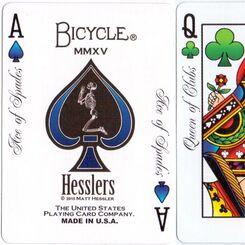
Hesslers Enhanced
Matt Hessler’s “Enhanced” four-colour playing cards, 2015.
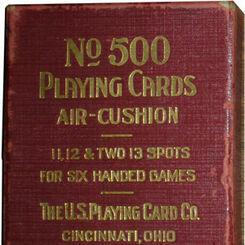
No.500 Playing Cards
No.500 Playing Cards published by U.S.P.C.C., c.1910
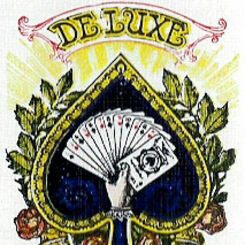
De Luxe No.142
A wide size version of De Luxe No.142 had been published in c.1920, with a similar Ace of Spades and...
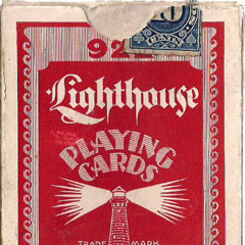
Lighthouse No.922
“Lighthouse No.922” playing cards were introduced in c.1920.
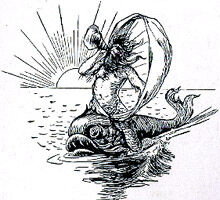
Triton No.42
There have been at least three different versions of the Triton deck, with different Jokers, differe...
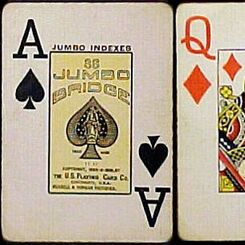
Jumbo Bridge 88
Cards with jumbo indices were introduced in 1895, and were given the subtitle '88'.
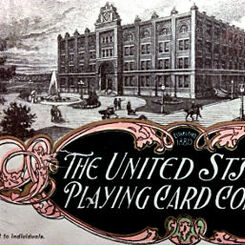
The United States Playing Card Company
Over the years the pressures of competition and other market forces have led to many smaller manufac...
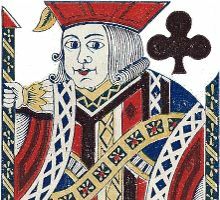
Lawrence & Cohen
Lawrence & Cohen were successors to Lawrence, Cohen & Co.
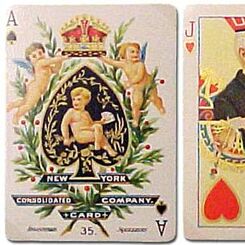
Royal Playing Cards, 1890s
Royal Playing Cards, 1890s
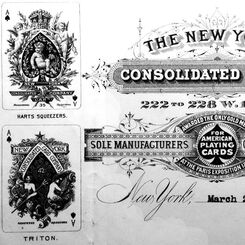
New York Consolidated Card Company
The New York Consolidated Card Company was formed in 1871 by the merging of Lawrence & Cohen, Samuel...
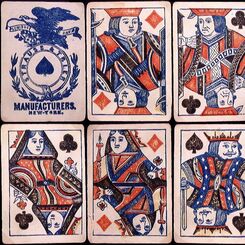
Strauss & Trier, c.1860
Strauss & Trier, New York, c.1860.
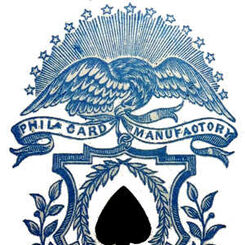
Samuel Hart, 1846-1871
Samuel Hart was a prolific manufacturer of playing cards who commenced business sometime around 1845...
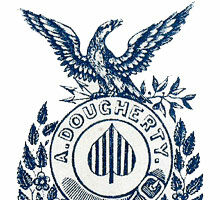
Andrew Dougherty 1848-1930
Andrew Dougherty was born in Donegal in Northern Ireland in 1827. He started his playing card busine...
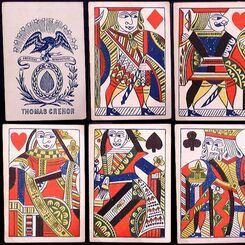
Thomas Crehore copy, c.1850
Thomas Crehore copy, c.1850.
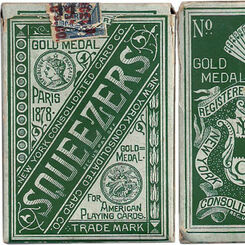
Squeezers No.35
By 1877 the New York Consolidated Card Co's "Squeezers" were a great success on account of the indic...
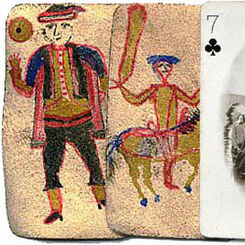
U. S. A.
The manufacture of playing cards in America only began during the second half of the 18th century, a...
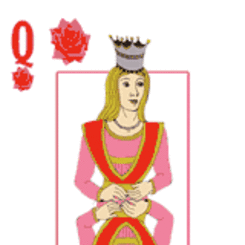
Bonnie Blue’s Rummy Cards
Bonnie Blue’s Rummy Cards.
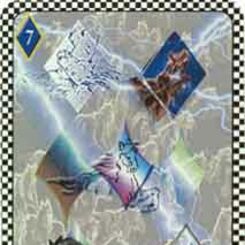
4 Seasons Playing Cards
Colours of the Four Seasons - Playing Card Art Deck
Most Popular
Our top articles from the past 60 days






















